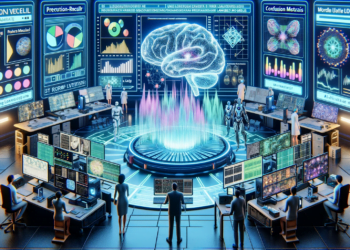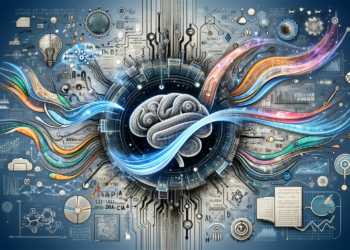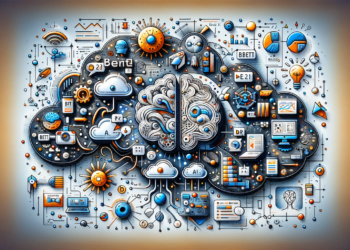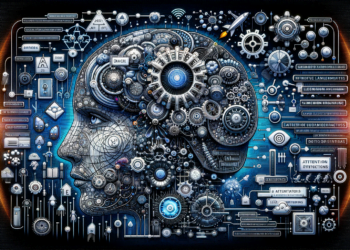The disciplines of Natural Language Processing (NLP) and large-scale Language Models have undergone a significant turning point, as recent advances have expanded their capabilities and applications. This article explores the synergies between these areas, providing a detailed technical analysis and a forecast of the future trajectory of their joint evolution.
Transformative Language Models
The advent of Transformer-based models, such as BERT (Bidirectional Encoder Representations from Transformers) and GPT (Generative Pre-trained Transformer), has redefined the underlying architecture and approaches to NLP tasks. The structure of Transformers underpins the ability of language models to effectively incorporate context, utilizing attention mechanisms that weigh the relevance between different words in an input sequence.
Pre-trainability is another revolutionary concept introduced with these models, facilitating the transfer of knowledge across tasks through “fine-tuning.” This technique enables a generalist model to be adapted for a specific task with relatively low computational effort, contrasting with the previous approach that required each model to be trained from scratch for every new task.
The Rise of Large-Scale Language Models
A notable phenomenon is the exponential growth in the size of the models, as seen in successive iterations of GPT that have scaled from 117 million parameters in GPT to 175 billion in GPT-3. This increase in scale has facilitated a quantitative improvement in the understanding and generation of language, enabling greater generalization and broader use cases.
These language models operate under the scale hypothesis, the idea that simply adding more data and increasing computing capacity will yield superior results. However, scaling up brings with it challenges of energy efficiency and cost, and raises questions about diminishing returns and potential fundamental barriers.
Contrastive Learning and Weak Supervision in NLP
Beyond traditional supervised training, contrastive learning mechanisms have enabled the generation of richer and more discriminative text representations. Models like SimCSE employ techniques of positive/negative sampling to improve semantic understanding without the need for manual annotations. Weak supervision, a paradigm where the training information is partially labeled or labeled with noise, has also gained relevance. Tools such as Snorkel allow NLP practitioners to leverage large volumes of unstructured data without incurring the high cost of manual labeling.
Injection of External Knowledge
The integration of external knowledge bases into language models, as seen with ERNIE (Enhanced Representation through kNowledge Integration), allows for the incorporation of structured knowledge into learning and inference. Such models go beyond simple textual perception, embracing the semantics and ontology of underlying concepts. The injection of knowledge offers advantages in tasks that require deep understanding, such as question-answering or inferring relationships between entities.
Probabilistic Neural Models and Convergence with NLP
The confluence of NLP with probabilistic neural models has given rise to approaches such as Adversarial Generative Networks for text (TextGAN) and Variational Latent Auto-regressive Models (VLAEs). These models provide statistical robustness in text generation and the ability to model uncertainty inherently, which is beneficial in applications such as dialogue and creative content generation.
Emerging Practical Applications
The application of these advanced NLP models extends across a multitude of domains, from enhanced virtual assistants, context-sensitive recommendation systems, and social media monitoring platforms using advanced sentiment analysis, to the automatic generation of news and personalized content.
Case Study: Language Models in the Pharmaceutical Industry
A pertinent case study is the application of language models in the pharmaceutical industry, where the capability to process vast compendiums of scientific literature and extract key insights accelerates biomedical research. Using NLP, it has been possible to synthesize knowledge scattered across previous research and generate hypotheses for drug repurposing.
Challenges and Future Outlook
Although current language models are impressive, they present inherent challenges: from biases and toxicity to limitations in causal understanding and common sense. Future research in NLP and language models is aimed towards more interpretable and explainable systems, as well as the evolution towards a framework of human-AI co-evolution.
Furthermore, multimodal integration, enabling the joint processing of text, image, and sound, represents the cutting edge in the evolution of language models, promising an even richer and more natural understanding and generation of language.
Conclusion
The current state of NLP and language models demonstrates exceptional progress and a tangible promise for the future. The synergy between advances in theory and computation has propelled these fields towards horizons previously considered inaccessible. However, the task of refining and directing these advances towards ethical and practical applications falls on the scientific and technological community, ensuring that their potential is leveraged responsibly and equitably.






















